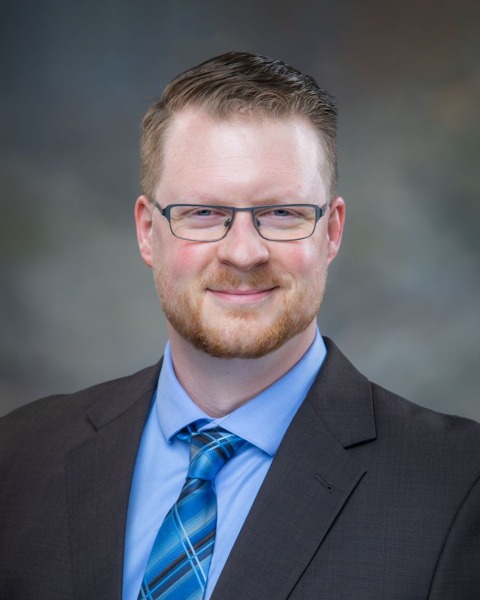Amplification and Assistive Devices (AAD)
PP322 - Stethoscope Use and Connectivity Among Health Professionals and Trainees Who Are Deaf and/or Hard of Hearing
- DJ
Dalton Jones, BA (he/him/his)
AuD Student
University of Arkansas for Medical SciencesFinancial Disclosures: I do not have any relevant financial relationships with anything to disclose.
Non-Financial Disclosures: I do not have any relevant non-financial relationships with anything to disclose. 
Samuel R. Atcherson, PhD (he/him/his)
Professor, Audiology
University of Arkansas for Medical Sciences
University of Arkansas for Medical Sciences
Little Rock, ArkansasDisclosure(s): National Institutes of Health and Small Business Technology Transfer: Grant/Research Support (Ongoing); Plural Publishing, Inc: Royalties (Ongoing); Thieme Medical Publishers: Royalties (Ongoing); University of Arkansas for Medical Sciences: Employment (Ongoing)

Christopher Moreland, MD, MPH (he/him/his)
Dell Medical School at UT Austin
Dell Medical School at UT AustinFinancial Disclosures: I do not have any relevant financial relationships with anything to disclose.
Non-Financial Disclosures: I do not have any relevant non-financial relationships with anything to disclose.
Lead Presenter(s)
Presenter(s)
There are significant challenges for deaf/hard of hearing health professionals in the use stethoscopes. First, there are no established acoustic standards for stethoscopes. Second, individuals with hearing loss make up a diverse group, some who use augmentative devices and others who do not. Third, because of the above two challenges, audiologists may struggle with how to assist this unique demographic. In this study, we surveyed deaf and hard of health professionals and trainees on their use of stethoscopes with a focus on both connectivity strategies and challenges. The results should help inform audiologists as well as generate future research.
Summary:
Hearing loss affects 466 million people globally, including health professionals who routinely use stethoscopes for physical examination.[1] Stethoscopes are acoustic devices used to listen to sounds of the body including those from the lung, heart, gastrointestinal tract and blood flow in arteries and veins. Appropriate diagnosis of diseases, such as cardiovascular disease, using a stethoscope depends on the experience and the hearing threshold of health professionals and the acoustic parameters of the stethoscope.[2] Stethoscopes can be categorized into two groups: conventional (called nonamplified or acoustic) stethoscopes and electronic (called amplified or digital) [3]. Electronic stethoscopes were designed to overcome the auditory limitations of conventional stethoscopes in terms of amplifying sounds, overcoming background noise and filtering sound frequencies [4], and even offering digital options for visual analysis of waveforms. Currently, no standards (or parameters) exist for measuring the acoustical characteristics of stethoscopes.[5] Pasterkamp et al. [6] stated >20 years ago that “stethoscopes are rarely tested, rated, or compared and are often chosen for their appearance, reputation, and inadequately supported claims of performance” (p. 974), and this currently remains the case. Although electronic stethoscopes provide specifications, consumers must rely on the individual claims made by manufacturers regarding gain (dB) and frequency (Hz). Unfortunately, these claims cannot be assumed to be uniformly distributed across frequencies.
There are several stethoscopes on the market, but just as diverse are the deaf/hard of hearing health professionals who use them. There is a paucity of research and information to help these health professionals and their audiologist. In this study, we surveyed deaf and hard of health professionals and trainees on their use of stethoscopes with a focus on both connectivity strategies and challenges.
Data collection is ongoing from an online survey. In the first section, we are obtaining basic demographic data such as age, gender, profession, and audiological history (including hearing loss onset and any hearing devices used). The remainder of the survey comprises of questions about 1 or more stethoscopes used with or without their hearing devices, frequency of use, and any strengths and weaknesses of the connectivity options they employ. The results should help inform audiologists as well as generate future research.
1. World Health Organization. Deafness and Hearing Loss; 2019. Available from: https://www.who.int/news‑room/fact‑sheets/detail/ deafness‑and‑hearing‑loss. [Last accessed on 2019 Oct 10]. 2.
2. Nowak LJ, Nowak KM. Sound differences between electronic and acoustic stethoscopes. Biomed Eng Online 2018;17:104. 3.
3. Bankaitis AU. Amplified Stethoscope Options for Professionals with Hearing Loss. Houston: Audiology Online; 2010. Available from: http://www.audiologyonline.com/articles/ amplified‑stethoscope‑options‑for‑professionals‑860/. [Last accessed on 2019 Oct 23].
4. Kalinauskienė E, RazvadauskasH, MorseDJ, MaxeyGE, Naudžiūnas A. A Comparison of electronic and traditional stethoscopes in the heart auscultation of obese patients. Medicina (Kaunas) 2019;55. pii: E94. 5.
5. Atcherson SR, Franklin CA, Smith‑Olinde L. Hearing Assistive and Access Technology. San Diego, CA: Plural Publishing, Inc.; 2015. 6.
6. Pasterkamp H, Kraman SS, Wodicka GR. Respiratory sounds. Advances beyond the stethoscope. Am J Respir Crit Care Med 1997;156:974‑87.
Learning Objectives:
- Participants will be able to describe common stethoscopes used by deaf and hard of hearing health professionals and trainees and their strategies for connectivity.
